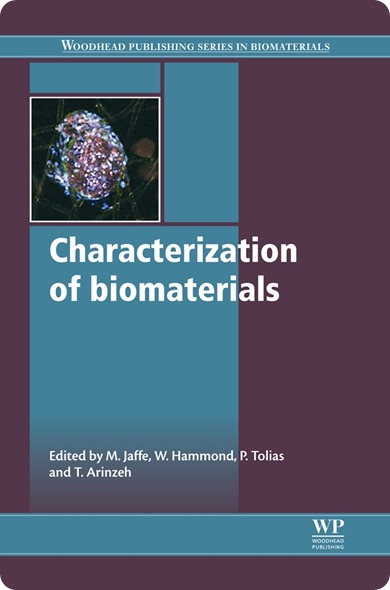Biomaterials and medical devices must be rigorously tested in the laboratory before they may be implanted into test subjects. By ensuring that these test methods are both quick and efficient, an increased number of materials can be tested and working implants can be produced more rapidly. The development of such tests is therefore essential to biomedical advancement, and Characterization of biomaterials reviews the latest methods for defining properties and characterizing materials.
Characterization of biomaterials discusses a wide array of techniques and various unique approaches to the problems faced in characterizing biomaterials, whilst also providing information on standards and methods for assessing the safety and biocompatibility of biomaterials.

Beginning with an introduction to microscopy techniques for analyzing the phase nature and morphology of biomaterials, Characterization of biomaterials goes on to discuss scattering techniques for structural analysis, quantitative assays for measuring cell adhesion, motility and differentiation, and the evaluation of cell infiltration and tissue formation using bioreactors.
Further topics considered include studying molecular-scale protein-surface interactions in biomaterials, analysis of the cellular genome and abnormalities, and the use of microarrays to measure cellular changes induced by biomaterials. Finally, the book concludes by outlining standards and methods for assessing the safety and biocompatibility of biomaterials.
With its distinguished editors and international team of expert contributors, Characterization of biomaterials is an authoritative reference tool for all those involved in the development, production and application of biomaterials.
Characterization of biomaterials:
- reviews the latest methods for analyzing the structure, properties and behaviour of biomaterials
- discusses scattering techniques for structural analysis, quantitative assays for measuring cell adhesion, and motility and differentiation
- examines the evaluation of cell infiltration and tissue formation using bioreactors